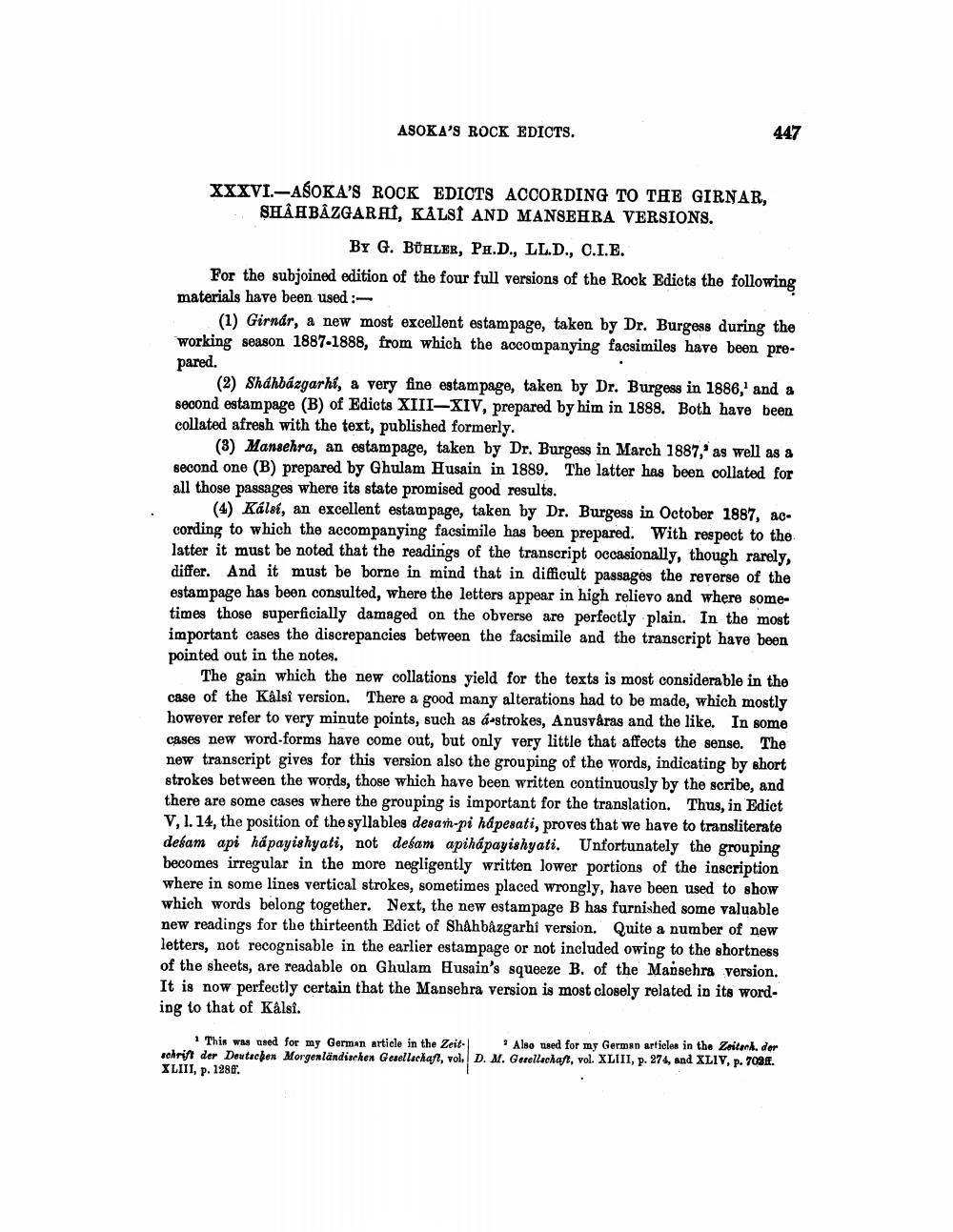________________
ASOKA'S ROCK EDICTS.
XXXVI.-ASOKA'S ROCK EDICTS ACCORDING TO THE GIRNAR, SHAHBAZGARHI, KALSI AND MANSEHRA VERSIONS.
447
By G. BÜHLER, PH.D., LL.D., C.I.E.
For the subjoined edition of the four full versions of the Rock Edicts the following materials have been used :
(1) Girnár, a new most excellent estampage, taken by Dr. Burgess during the working season 1887-1888, from which the accompanying facsimiles have been prepared.
(2) Shahbázgarhi, a very fine estampage, taken by Dr. Burgess in 1886,' and a second estampage (B) of Edicts XIII-XIV, prepared by him in 1888. Both have been collated afresh with the text, published formerly.
(3) Mansehra, an estampage, taken by Dr. Burgess in March 1887, as well as a second one (B) prepared by Ghulam Husain in 1889. The latter has been collated for all those passages where its state promised good results.
(4) Kálsi, an excellent estampage, taken by Dr. Burgess in October 1887, according to which the accompanying facsimile has been prepared. With respect to the latter it must be noted that the readings of the transcript occasionally, though rarely, differ. And it must be borne in mind that in difficult passages the reverse of the estampage has been consulted, where the letters appear in high relievo and where sometimes those superficially damaged on the obverse are perfectly plain. In the most important cases the discrepancies between the facsimile and the transcript have been pointed out in the notes.
The gain which the new collations yield for the texts is most considerable in the case of the Kâlsi version. There a good many alterations had to be made, which mostly however refer to very minute points, such as á-strokes, Anusvåras and the like. In some cases new word-forms have come out, but only very little that affects the sense. The new transcript gives for this version also the grouping of the words, indicating by short strokes between the words, those which have been written continuously by the scribe, and there are some cases where the grouping is important for the translation. Thus, in Edict V, 1. 14, the position of the syllables desam-pi hápesati, proves that we have to transliterate delam api hápayishgati, not delam apihápazishyati. Unfortunately the grouping becomes irregular in the more negligently written lower portions of the inscription where in some lines vertical strokes, sometimes placed wrongly, have been used to show which words belong together. Next, the new estampage B has furnished some valuable new readings for the thirteenth Edict of Shahbâzgarhi version. Quite a number of new letters, not recognisable in the earlier estampage or not included owing to the shortness of the sheets, are readable on Ghulam Husain's squeeze B. of the Mansehra version. It is now perfectly certain that the Mansehra version is most closely related in its wording to that of Kâlsi.
1 This was used for my German article in the Zeit- Also used for my German articles in the Zeitsch, der schrift der Deutschen Morgenländischen Gesellschaft, vol, D. M. Gesellschaft, vol. XLIII, p. 274, and XLIV, p. 703. XLIII, p. 1288.




